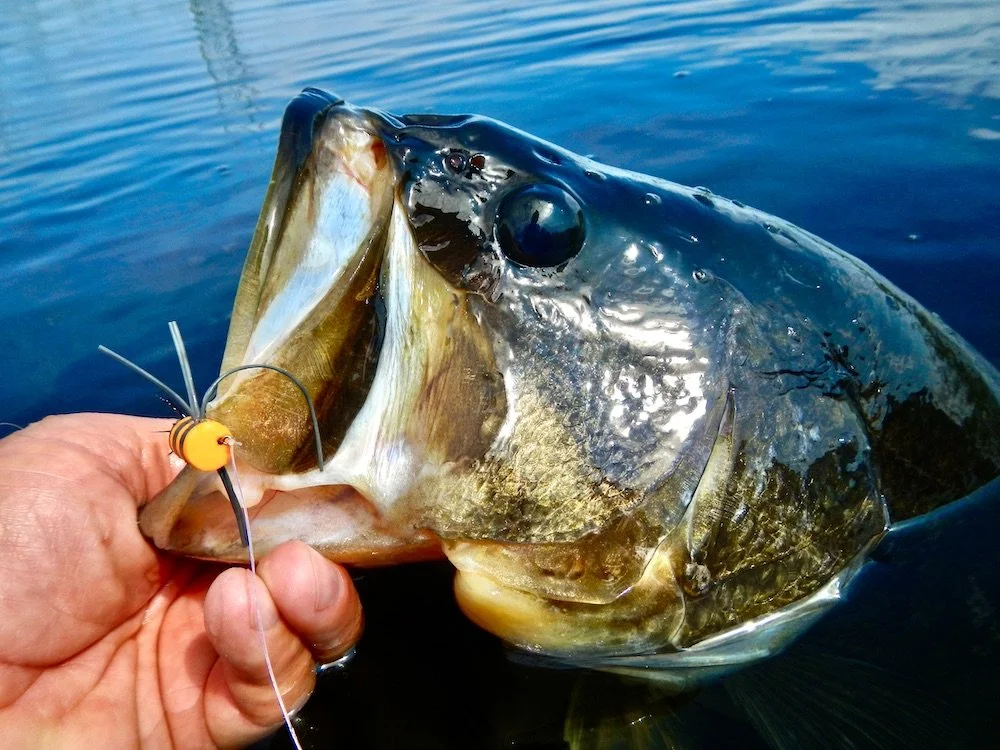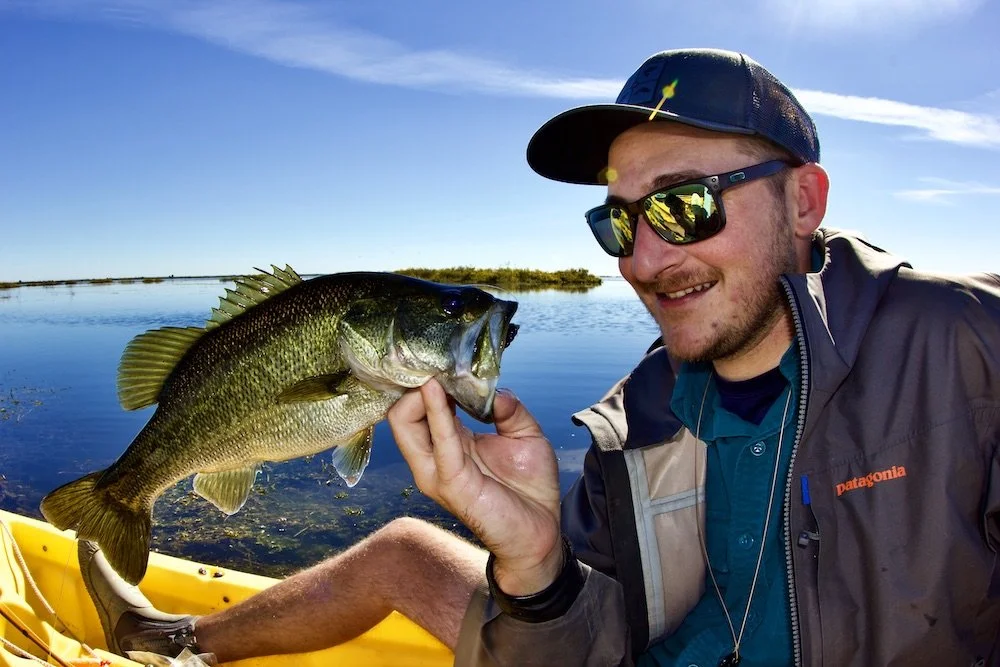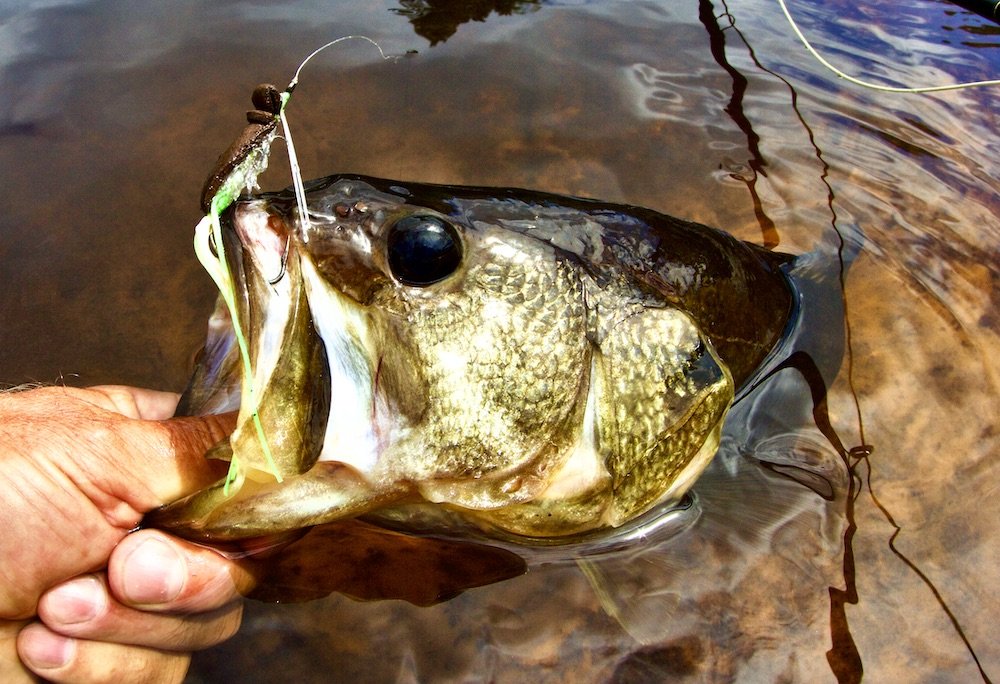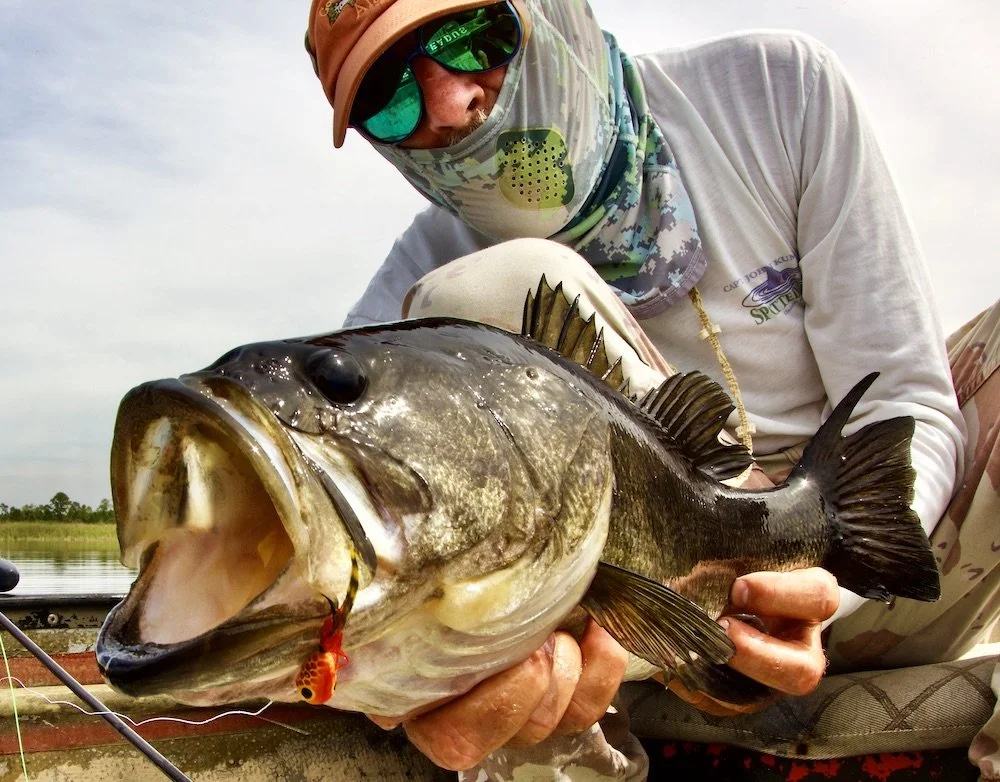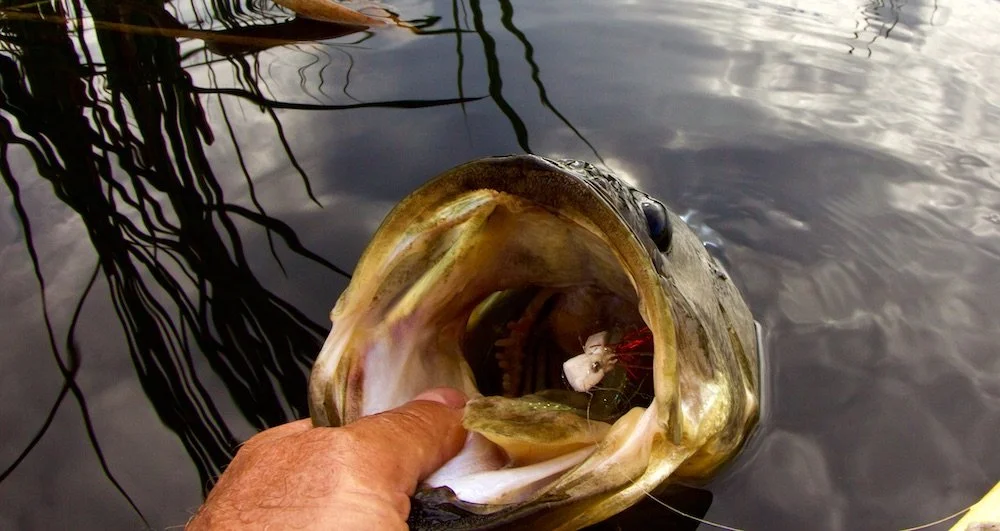Fly Fishing for Bass in Orlando
By: John Kumiski
Some of the most fun and exciting fly fishing in central Florida involves chasing largemouth bass. Almost every body of water larger than a couple acres holds bass. They're not the only species in that water, either. Spotted gar, bowfin, various sunfish species, crappie, and other fishes make every day fishing here an adventure. Read on for hints on how and where to go Fly Fishing for Bass in Orlando.
Tackle
You need a fly rod and reel with a floating line. I use a nine foot, four-weight Temple Fork for most of my bass fishing; however, friends and acquaintances glance askance. Lots of the fish are small, and you've also got all those sunfish species. The little rod makes it more challenging when the big boys hit. Unless they're near lumber it usually works, too. Use what you want. It will work.
I like a nine- or ten-foot leader with a ten or twelve pound tippet. Knotless leaders work well in weedy areas if the tippet is beefy enough.
Flies
People accuse me of being a minimalist. My flies may reflect this philosophy. Regardless of where you fish or what you fish for, being able to cover the water column is always important. Carry surface flies, slow sinkers, and some that sink like an anvil. Since bass fishing always involves weeds, blowdowns, and other structure, weedguards on flies is likewise important.
Alex used a popper to get this Stick Marsh bass.
My preference by a wide margin is to use surface flies. The strikes! Incredible! I like Gurglers and the Brickhead, a foam popper. Rubber legs and marabou are featured in a lot of them, but the fish don't seem to care if the tail is something juicy or just inexpensive wig hair. Simple works! Most are on size 4 or 2 stinger hooks (gotta throw them with that little rod), but bluegill poppers often work, too. Just because bass have huge mouths doesn't mean you have to use a huge bait!
Slow sinkers include any of the myriad unweighted streamer patterns, as well as eelworms and that sort of thing. This may be heresy, but bass seem to eat anything that looks like food in the two-to-four inch size range. I don't think that pattern matters much if you show it to them in a convincing manner. Mind you, this piece is about how to catch bass, not giant bass. If all you want are bruisers then you probably should gear up. A five pounder on that four-weight is plenty, thank you! And on a small rod, all those one- and two-pound fish are pretty sporting.
Most of my streamers are tied with synthetics. They shed water and are easy to cast. The fish eat them. They cover my needs. Again, size 2 is as large as you need to go.
Synthetic streamers sometimes work when surface flies don't.
Weighted flies only work on a clean bottom, such as sand. If it's weedy they collect weed, even with the guard. Clouser minnows and bunny leeches fit the bill. You probably won't use them much unless it's cold out.
There are thousands of fly patterns you can catch bass with here. Be able to cover the water column with offerings in that two-to-four-inch size range and you will catch your share.
Techniques
OK, an anecdote here. During a recent June I fished a shallow, weedy pond, a fish factory. The bite was awesome from sunrise until about 930 AM, when it turned off like someone shut the faucet. I even tried sinking flies for an hour, to no avail. Rather than beat a dead horse I packed it in, never a bad idea when that June sun gets high.
The following day I fished a small stream, promising my bride to be home by lunchtime. Lunch came quick, man. The bite never slowed. On the contrary, it seemed to get better as the sun climbed to its zenith. I hated to leave.
Bass on a gurgler!
Time of day can make a difference, especially during the heat of the summer (morning best) and the cool of winter (evenings best). But you may find that trends holds true more in lakes and ponds than in streams. Central Florida has some awesome bass streams and the bite can last all day sometimes.
For surface fly use, roughly two-to-three feet of water seems to be the best depth, if there is food for the bass. Shallower they are often too spooky. Deeper they seem unwilling to come up. Cast around or parallel to shore, paying particular attention to weeds, breaks in those weeds, any type of lumber, stream mouths, points, pockets, anything that looks like a good ambush spot for the fish you're after.
They may be fish but they need to make a living! Look for concentrations of bait- shiners, shad, bluegills. Look for active fish. Some days the fish are just going crazy. For example, at daybreak during late March and early April bass collect where the St. Johns River enters Lake Harney. Speculation is that they're feeding on out-migrating shad fingerlings. Whatever they're eating, they feed intensely for about an hour, until the sun gets up. So, you just cast where the fish are breaking.
Casting where you've seen a fish break is always a good idea.
Poppers do not need to be large to garner strikes.
When they won't come up for a surface fly it's time to go below. Work the same types of areas. During the winter months this may be the only way you'll get a bite. If it's cold, fish more slowly than you otherwise might.
Locations
The above discussion on techniques does not address whether you're on shore, wading, or fishing in a boat. For this article, fishing from a boat means a paddle-powered vessel, a canoe or a kayak.
Central Florida is loaded with "famous" bass lakes and the St. Johns River. Bass fishing is an institution here, and bass clubs have bass tournaments on all those name lakes and the river all the time.
Avoid those places like the plague.
Fishing success frequently is inversely proportional to fishing pressure. So, you want to find small ponds and streams where a bass boat couldn't possibly go. Think retention ponds, private waters, golf course ponds, and of course the three streams on the north and east of Orlando- the Wekiva River, the Rock Springs Run, and the Econlockhatchee River.
In east Orlando there is a middle school, Corner Lakes Middle. They have a student fishing club there. On the property is a one-acre retention pond where the kids in the club get to fish once a week. They always catch bass there.
If a pond has been there long enough to support rooted aquatic vegetation like pickerelweed or water lilies, fish will be established in it. They are frequently unsophisticated, cooperative fish too, perfect for the boatless fly fisher.
Retention ponds are a usually overlooked resource for fly fishermen. I fish local retention ponds in Oviedo two or three times a year and while I've never gotten any trophies, I've yet to be skunked.
Wading is the best way to fish ponds, whether natural or man-made, except that many central Florida ponds are surrounded by cattails and have soft bottoms. Where the cattails stop growing the water is up to your armpits. That makes casting difficult. Add in the large carnivorous reptiles and wading suddenly becomes a much less attractive option. My experience with central Florida ponds is that it's best to stay on the banks.
A Brickhead popper conned a fat largemouth in a central Florida pond.
There are stretches in all three rivers where you can wade, but you need a boat to reach them. There a canoe livery on Rock Springs Run called King's Landing. There are canoes available for rent for the Wekiva River at Wekiva Springs State Park. And Joe at Peace of Mind Kayak Tours rents kayaks on the Econlockhatchee.
Of course, if you have your own canoe or kayak you can fish almost anywhere you can find access to water. Again, stick to the smaller bodies of water that do not have boat ramps.
A word of caution- When I first moved to Florida I heard about East Lake Toho from a number of people. I drove down there and launched my canoe. It does look magnificent, thick stands of bulrushes all the way around a very large lake. Airboats run at speed through those bulrushes and while I was out there I realized there was no way those guys could see me. I never went back. About a year later a canoeist on East Lake was killed by an airboat. You are responsible for your own safety!
You'll catch more fish in the smaller ponds anyway, because you'll have a lot less competition.
Conclusion
We've discussed, tackle, flies, techniques, and locations, certainly enough to get you started. Please practice catch and release, and best of luck to you as you try Fly Fishing for Bass in Orlando!
Have you done something interesting outdoors? Join Global Outdoors and write a review to tell everyone about it! We’re building the home for trusted reviews of outdoor experiences, outfitters, and guides.
